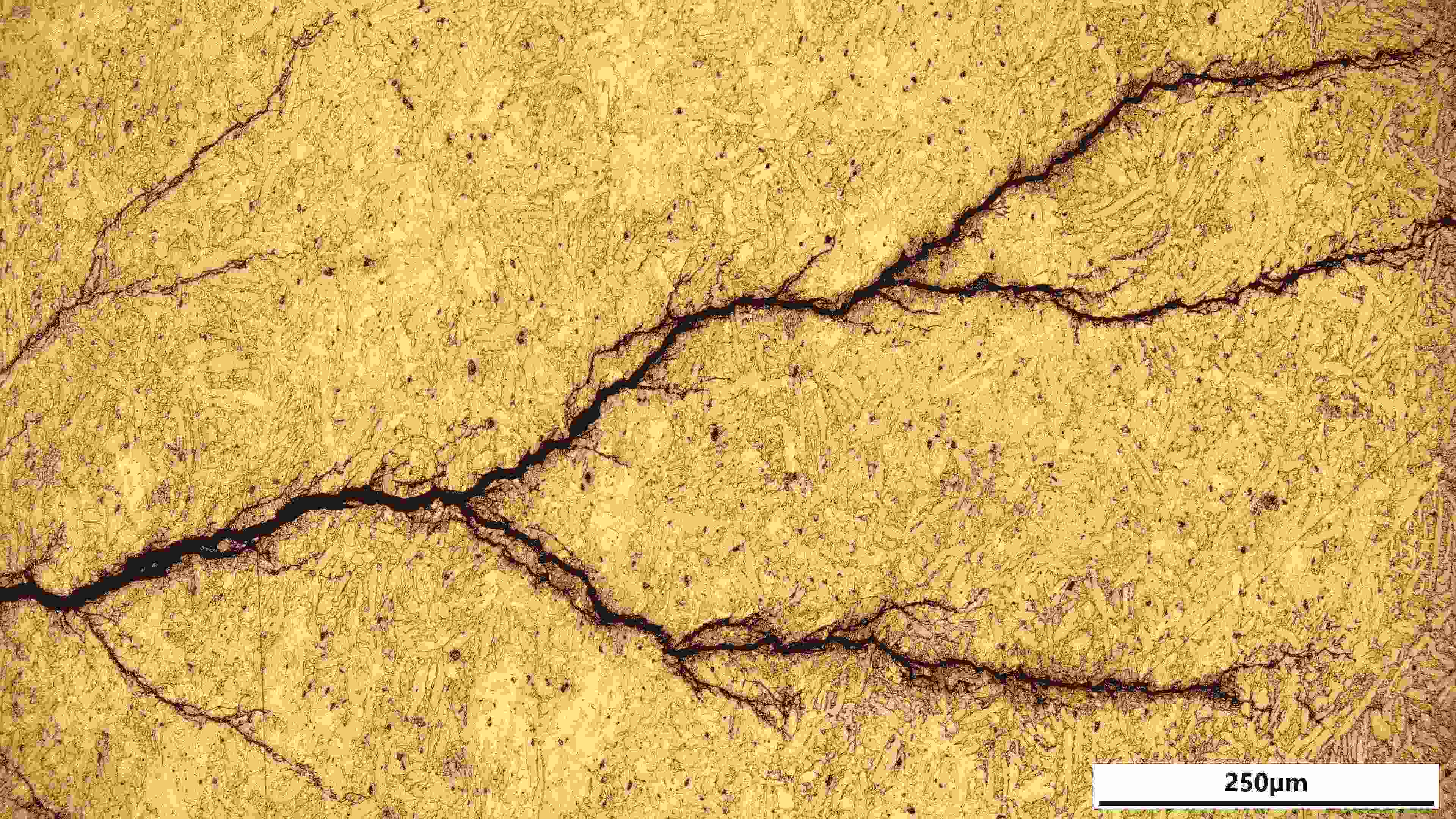Residual Stress Testing in Copper Alloys - Brass Bronze Cupronickel
Residual Stress in Brass, Bronze and Cupronickel
When copper alloys like brasses and bronzes and cupronickel materials are used in applications like plumbing, instrumentation and heat exchange, are cast, heat treated, cold worked or welded, residual or internal tensile stresses can be generated. These stresses make copper alloys susceptible to stress corrosion cracking known as SCC when exposed to certain corrosive environments. SCC problems include:
- Brass plumbing fitting cleaned with ammonia containing solutions or chemicals.
- Copper heat exchanger tubes exposed to fluorocarbon.
- Cupronickel components in contact with sulphides.
- Checking components comply to MOD and marine specifications.
 To avoid copper alloy components from failing by SCC, the residual stresses must be alleviated by submitting them to a stress relief heat treatment.
To avoid copper alloy components from failing by SCC, the residual stresses must be alleviated by submitting them to a stress relief heat treatment.
It is important to know whether a stress relief heat treatment was conducted or successful. LPD Lab Services with its metallurgy experience has the capability and competence to test copper alloys for the presence of residual stress and this is done in an environmentally responsible manner. Testing can be done either by the mercurous nitrate method or by the ammonia vapour method. Passing any of these tests implies that the material or component is free of residual stress and would, therefore, not fail by stress corrosion cracking, provided that no external stress is applied in service.
Detecting Residual Stress in Copper Alloys
The laboratory can conduct SSC tests by 2 different methods, which can be vital in critical applications and specifications like aerospace, military marine and plant components:
The Mercurous Nitrate Test
The mercury nitrate test method to detect Stress Corrosion Cracking (BS EN ISO 196 and ASTM B154) is the original method to test copper and copper alloys for residual stress and is often assocaited with military applications conformance tests. It is considered to be the most sensitive of the two SSC test methods. SSC shows up on test pieces as cracks typically with a branching nature. Once everything is set up, a test result can be obtained within an hour. Any component subjected to this test cannot placed into service after testing and must be disposed of in an environmentally safe way.
The Ammonia Vapour Test
The ammonia vapour test method to detect Stress Corrosion Cracking (ASTM B858) was developed to be more environmentally friendly, by avoiding toxins like mercurous nitrate and mercury. It is considered to be equally effective as the mercurous nitrate test, but its drawback is that the test takes more than a day to obtain a result and requires extraction and sealed test vessels for Health and Safety reasons. SSC shows up on test pieces as cracks. Any component subjected to this test may be placed into service after testing, if it passed the test.

